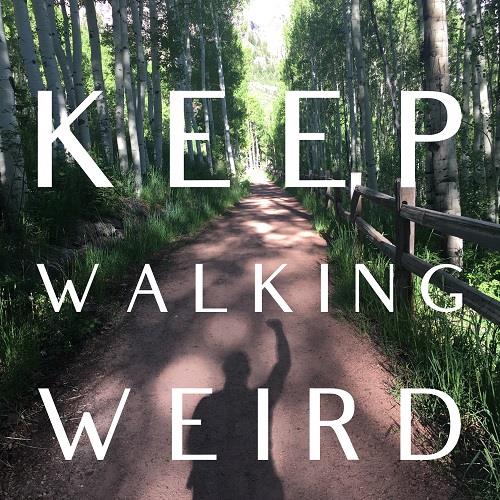Take a walk, but don’t just walk.
Get more out of the movement you do. With more and more time spent motionless, the more beneficial we make our moving time, the better it is for us.
If your movements are uncertain enough and involve balance, coordination, reactivity, catching, throwing, and doing so on variable surfaces and sometimes involving other people, you will get more out of your movement AND enjoy it more. (Which means you will likely do it more often.)
The endless ways of injuring ourselves through bumps, falls, lifting things, etc. means we are well-served by preparing – as best as we can – for the random, unpredictable nature of movement in life by purposefully inserting some of that random, unpredictability into our everyday movement.
What follows are numerous options for getting out and talking a walk that is so much more. Walking while adding any of the below actions will prepare you for a life filled with uncertainty.
- “Hard Way” Walk / “Long-Cut” Walk – take the path of increased resistance: walk while balancing on the curb for a few steps, weave around signs, utility poles, trees or benches. (“long cut” is the opposite of “short cut”)
- Step on the cracks (or don’t step on the cracks)
- Ball Toss – toss a ball to yourself or a partner
while walking (tennis, lacrosse, racquetball, etc.)
- Bounce every third toss in the air
- Toss quickly back and forth between hands or between yourself and a partner
- Toss increasingly higher until you miss a catch
- Toss over tree branches, off walls, signs, etc.
- “Snowflake” toss – each toss is unique (behind the back, under the legs, around torso, etc.)
- Numbered Ball Toss (write numbers on tennis ball
with dark permanent marker)
- Count up – start at zero, toss and catch, adding the number most visible.
- Count down – start at a predetermined number (e.g., 100) and subtract the number most visible on each catch
- Count up/down (2 or more people) – rules same as above but add the number if the ball is tossed in the air (“up”) and subtract if it is bounced between partners (“down”).
- Object Toss (stick, rubber chicken, reaction
ball, etc. variable objects require more attention and focus to catch
successfully) – toss to yourself or a partner
- Stick – regular catch or try to flip it end-over-end then catch. Option to add one more flip with each catch (i.e., flip one revolution, two revolutions, three revolutions…once stick is dropped start over)
- Reaction ball – hard rubber ball with bumps on it
- Rubber chicken (or similar fun, random object)

